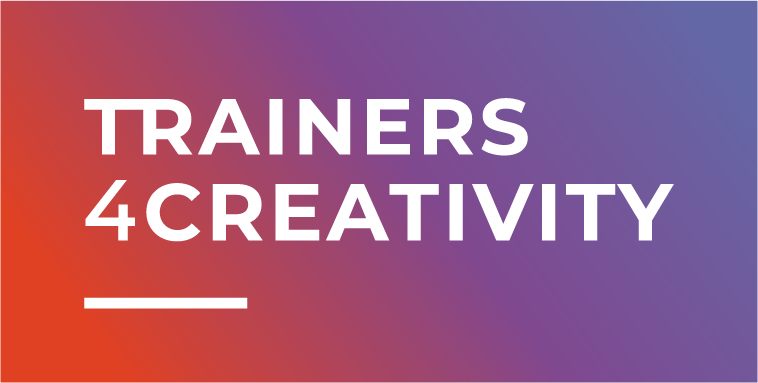DIGITAL TRAINING KIT
Digital tools and tips for Youth Workers active in creative and cultural areas
Why do we need to go digital?
Introduction:
This Digital Training Kit is a set of training resources in the form of good practices, guidelines, tools and tips on how Trainers and Youth Workers active in the creative and cultural areas can manage their training activities and educational services under a digital approach. The goal is to make the most out of the different digital tools available to make children and teenagers engage in a more meaningful way, using them to support the process of learning and competence-building.
Purpose of the Digital Training Kit:
Some digital tools can make activities for youth more accessible, fun, challenging and engaging. The goal of this training kit is to help Trainers and Youth Workers to digitize their activities, always having in mind fundamental concerns like accessibility, attractiveness and responsibility. With this tools you will receive useful insights and ideas on how to:
- Develop events, workshops and collaborative work online.
- Digitalise activities that are traditionally based in analog processes, making them more accessible.
- Use audio-visual materials and tools in an easy way, making your activities more attractive and engaging.
- Learn about virtual reality and gaming, and how these tools can be used to foment creativity and teamwork.
- Disseminate your resources / activities in an easy and inclusive way.
- Do a digital transition in a socially responsible way, recognising what are the right tools and their impact, to ensure you get the best out of the digital world and not the other way around.
To sum up, this Digital Training Kit aims to share good digital practices that can be applied by trainers/youth workers or inspire them in their work on the culture and creative sector, leading to the improvement of practices and innovation within the European youth work community by sharing knowledge and resources.

Before you start exploring the Digital Training kit…
What is a digital tool?
Due to the amount of digital tools available nowadays, it is not easy to know where to start and to find a definition that includes them all. So let’s simplify: a digital tool is basically any device, application, program, website, and other internet and computerized resources that facilitate or improve our use of digital processes and overall digitization efforts.
What is considered a Digital Competence?
According to the Digital Competence Framework for Citizens (DigComp), a major EU research project about this topic, Digital Competences are:
“confident, critical and responsible use of, and engagement with, digital technologies for learning, at work, and for participation in society. It is defined as a combination of knowledge, skills and attitudes.” (Council Recommendation on Key Competences for Life- long Learning, 2018).
The DigComp framework identifies the key components of digital competence in 5 areas (Dimension 1): Information and data literacy, Communication and collaboration, Digital content creation, Safety and Problem solving. You can read a summary of these areas here.
To have an overview of your or other people’s Digital Competences, you can try to use the Digital Competence Wheel which, after giving you the results, also offers concrete tools to show how these competences can be elevated and improved:
Digital tools and youth work – a current and fundamental combination:
As young people are becoming more and more familiar with different types of technologies that are constantly being updated, a youth worker has to follow these trends and be prepared to adapt activities to this digital reality, taking advantage of its many possibilities while also being alert to its dangers. This reality is so present that there is even the term Digital Youth Work, defined by the project YOUTH WORKERS 2.0 as follows:
“Digital youth work is an emerging term to describe the area of youth work that uses digital media and new technology to enhance outcome focussed youth development. (…) Digital youth work takes many forms and varies depending on the organisation, the infrastructure, funding and resources available to youth workers at the time. Digital media and technology can be either a tool, an activity or a content in youth work.”
The project also highlights common types of digital tools and activities related to Digital Youth Work, which you can see here. Some are also highlighted on our Digital Training Kit, with practical examples of case studies, tools and tips.

How can we go digital?
The Digital Training Kit is divided in 6 areas: Online events and software tools, Audiovisual materials and tools, Music digitalisation, Virtual reality and gaming, Dissemination and Socially responsible digitalisation. Before selecting your digital approach, it is important to ask the following questions:
- What kind of innovation are you bringing to your activity?
- How will the participants be positively affected by it?
- Is your digital approach / tool / activity accessible to the whole group? Know the participants' needs and act accordingly.
Inside each topic you will find case studies and tools that will help you to improve your work and expertise in order to achieve an effective and meaningful digital approach in the creative and cultural sectors.
For more useful information about Digital Tools and their impact, check the following presentation developed by CEPS Projectes Socials, full of guidelines and tips about this topic:
We hope this Digital Training Kit was useful for you!
For more and always updated information about youth work and Digital Resources, check the page Smart and digital youth work resources: where to find more (in english), published by Coyote Magazine (partnership between the European Commission and Council of Europe in the field of youth), that gathers information about the different corners and overlaps of youth work practice, policy and research.


